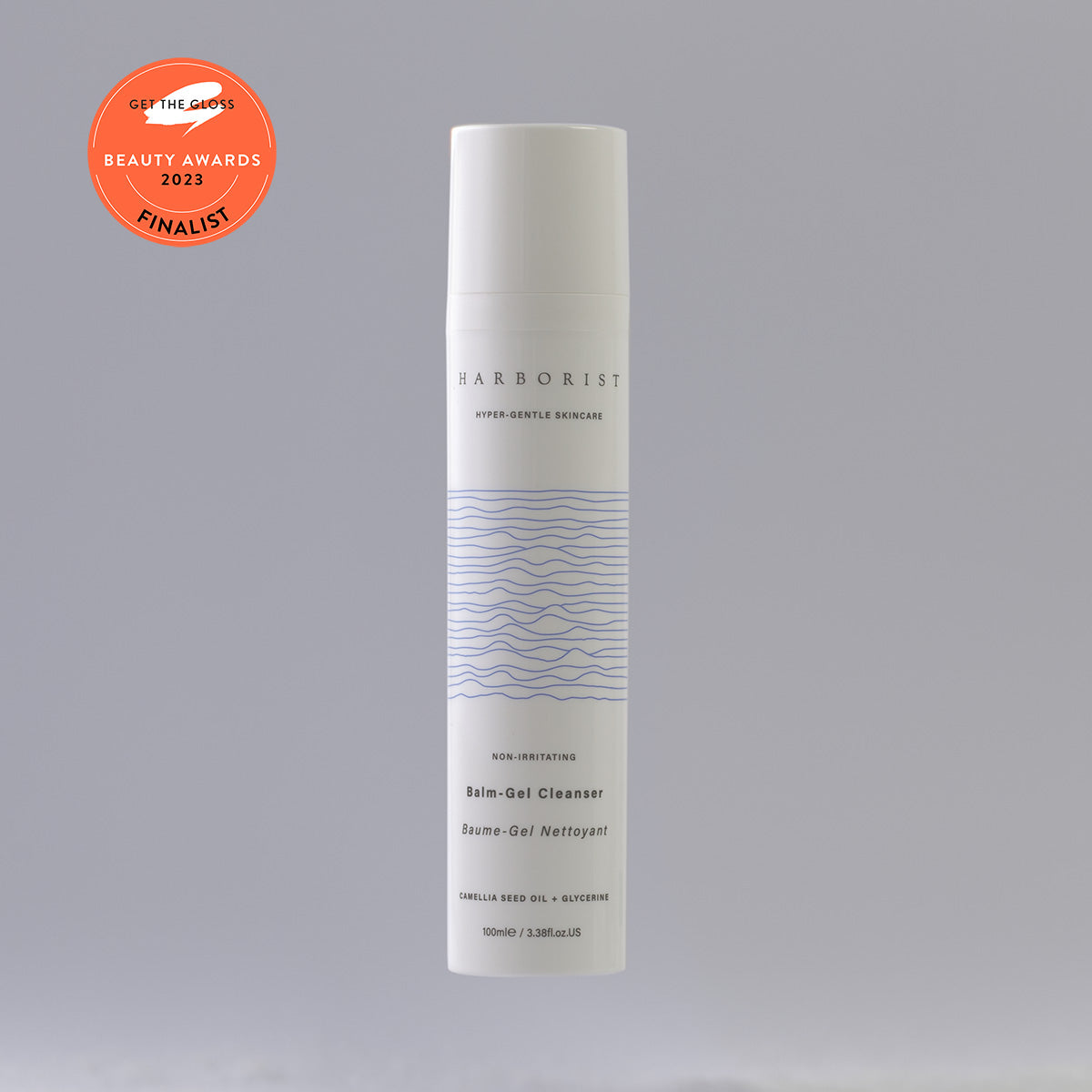Like a car can only get you from A to B when there's petrol in the tank and a driver behind the wheel, irritation happens when all the right conditions are present. And while scanning an ingredient list give you a feel for a product, over-relying on it can cause more confusion than clarity.
That's because ingredient lists are just one part of the puzzle. Here are some of the other things that make a difference.
1. Concentration
Ingredients can behave differently at lower concentrations.
Take glycerine as an example. You could apply this thick, sticky stuff straight onto your arm. But without also giving it some water to hang on to, it would likely start to grab the water in your skin, disrupting your barrier which would lead to irritation.
Yet if you put that glycerine in enough water and apply that to your skin instead, and you'll get lovely, hydrated skin.
Takeaway: Changing the concentration of an ingredient can mean it doesn't just cause less irritation, it may not cause any at all.
2. The effect of pH
pH can fundamentally change the chemistry of an ingredient.
An example is sodium hydroxide.
It's alkaline, and used as a pH adjuster, to make the final pH of the product match that of the skin - somewhere around 4.5-5.5.
Sodium Hydroxide is classed as an irritant, and if you put a solution of this on your skin, it would be corrosive. But when Sodium Hydroxide is added to an acid - and as it's used to make things less acidic, it often is - it breaks down into water and salt. So though sodium hydroxide may be the ingredient list on the side of the bottle, it's likely not in the finished product at all.
Takeaway: pH can fundamentally change ingredients.
3. The formulation.
When you're looking a a cream or a serum, what you can't see with the naked eye is that all those molecules are held together in a particular type of structure. This could be an emulsion or a type of suspension. That structure can act like a net, preventing ingredients from sinking too far into the skin.
Even if an ingredient causes disruption at deeper levels in the skin, it may be fine, or even beneficial on the surface.
Takeaway: Formulation matters! Even if you have identified an ingredient that doesn't work for you in some products, you may still find others where it's absolutely fine.
What to look for instead?
Specialised sensitive skin brands
The idea of what makes a sensitive skin-friendly product varies wildly between brands. It's often over-simplified to mean just fragrance-free, or with soothing actives, or it can be something that doesn't make sense, like only including natural ingredients.
If you're someone who worries about trying new things because you've had bad experiences in the past (I've definitely been there!) the products with the least trial and error are likely to be from those from brands who specialise in sensitive skin. Of course, there are many other products that will work for you too, but these are usually the safest bet.
The truth is that every product may cause a reaction in some customers. Large brands expect this. However, if the other 90% of their customers are happy, there's less reason to change the formulation, particularly if it might involve compromise to texture, feel or scent. However, if that brand specifically targets people with reactive skin, they'll focus more on ironing out potential issues reaction issues.
Real feedback
Real customer reviews are also valuable. Though there will always be some people who react to a product, if it's something that crops up frequently, it's a sign it may not be as easily tolerated as you might need.
It does depend on the brand being widely distributed enough to gather enough reviews, which is why I'm so grateful to all of you who take the time to leave them on our website!
One more thing...
And now to my least favourite method - websites and apps that claim to grade a product's irritation potential based on the ingredient list. These are problematic precisely because they give the illusion of being science-based. Yet drawing conclusions from just one data point - the ingredient list - distorts the results significantly.
It's like having a beautifully designed map, with all the wrong directions. While it may make you feel confident that you're going somewhere, you might end up in the wrong place.
My worry is that rather than creating transparency, it creates confusion, as well as anxiety about ingredients labelled as 'bad'.
So that's it - is there anything you find helpful or frustrating when you're looking for really gentle products? I'd love to hear - feel free to get in touch at feedback@harborist.co.uk and let me know!
Kate
P.S. And on that note, we recently had new lab results through which prove how gentle our Balm-Gel cleanser is to your skin. Out of five potential categories, it achieved the gentlest - non-irritating! I'll be posting more about that soon.
Remember too, you can now order individual samples or a whole sample set which comes with a £5 off voucher. That way, you can get a proper feel for how our moisturiser or cleansers work for your skin - still the best way of assessing a product by far.


